Class Survey
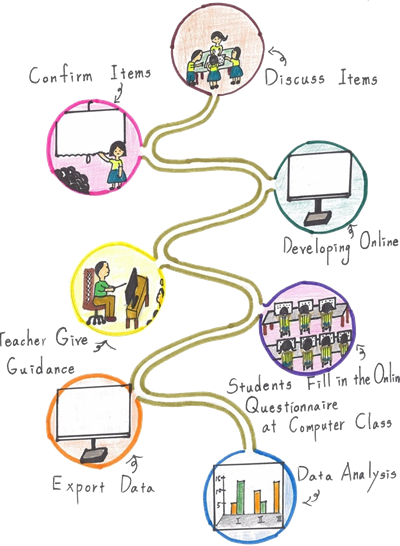
We used Google Docs to make a survey, and requested teachers from the information technology section to help us have students take our online survey during class. We collected the data, typed down the statistics on Excel, and conducted our analysis.
Question 1: Do you know where Xiaoxi Street is?
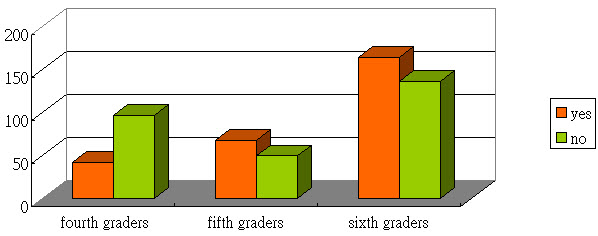
Analysis 1: The number of fourth graders who didn’t know was twice as much as that of those who did; the number of those who know and that of those who don’t among fifth graders were close; the number of those who know is slightly greater than that of those who don’t among the sixth graders.
Question 2: Please check the local cuisines stores that you have eaten at before (multiple selections allowed).
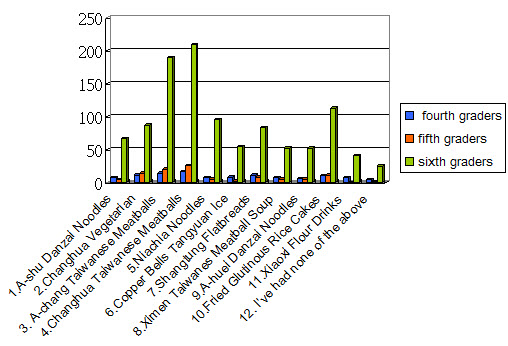
Analysis 2: Out of the cuisines we listed, the greatest number of people have eaten at Changhua Taiwanese Meatballs. Next is A-chang Taiwanese Meatballs, followed by Fried Glutinous Rice Cakes. The least number of people have eaten at Xiaoxi Flour Drinks. Numbers of people who have eaten at Copper Bells Tangyuan Ice, Ximen Taiwanese Meatball Soup, and A-huei Danzai Noodles are similar.
Question 3: If a person from out of town were to come here, what is the local cuisine you would most like to recommend?
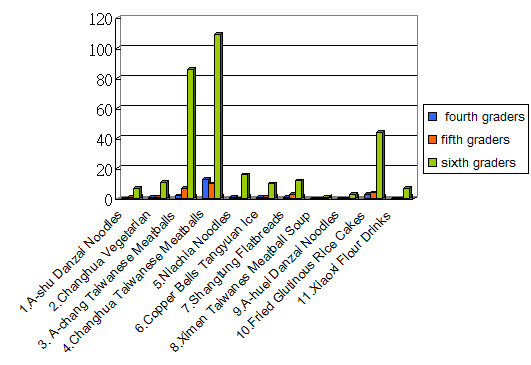
Analysis 3: The top three most recommended cuisines are Changhua Taiwanese Meatballs, A-chang Taiwanese Meatballs, and Fried Glutinous Rice Cakes. The statistics here coincide with that of the cuisines students have once had, and so it shows that students tend to recommend foods they themselves have tasted before. Least number of people recommend Ximen Taiwanese Meatball Soup (recommended only by one student), and the number of people who recommend flour drinks is also low, only seven.
Question 4: Please check the historical sites you've been to (multiple selections allowed).
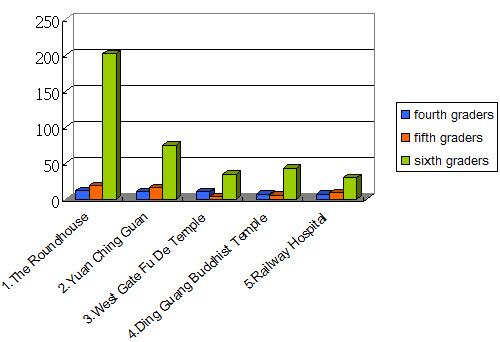
Analysis 4: The number of students who have been to the Roundhouse is the greatest, totaling at 233; the next highest is that of those who have been to Yuan Ching Guan, 102; the numbers for the other historical sites are similar. That the school often lists the Roundhouse and Yuan Ching Guan as excursion destinations could be the main reason why the greatest number of people have been to these locations.
Question 5: What scenic spot would you recommend to a person from out of town? (Choose only one)

Analysis 5: The number of students who chose the Roundhouse is the greatest, whereas there is only minimal difference in the number of people who chose other scenic sites.
Question 6: Do you know where the following historical relics are located?
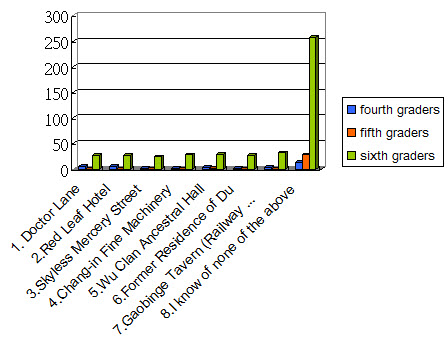
Analysis 6: Out of the seven historical relics in Xiaoxi, up to 298 people do not know where any of them are, and only about 20 to 30 people know where all of them are. This shows that students are unfamiliar with the locations of the historical relics of Xiaoxi.
Question 7: What part of Xiaoxi Street do you think needs urgent improvement?
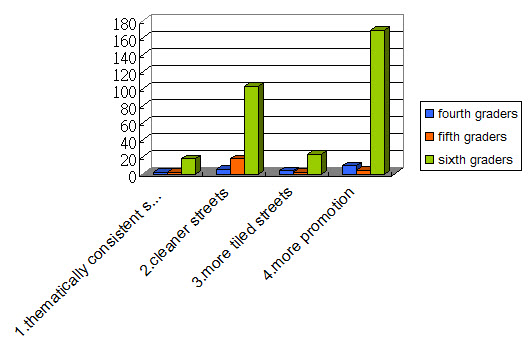
Analysis 7: Most students believe that cleaner streets and more promotion are the top priorities.
Question 8: Do you know why Xiaoxi Street regressed from prosperity to mediocrity?
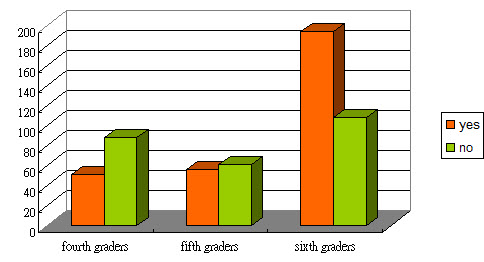
Analysis 8: Over half of the students don’t know why Xiaoxi Street regressed from prosperity to mediocrity; there are fewer fourth and fifth graders who know than those who don’t, and more sixth graders who know than those who don’t.
Comprehensive analysis and reflections:
The response of tourists and that of students with regard to local cuisines and historical relics are similar. Both groups are more familiar with the more well-known cuisines and historical relics. This shows that promotion is indispensable to the propagation of the culture of Xiaoxi.
We were able to find via our survey that for many people, especially students, Xiaoxi Street is in fact quite foreign. We felt more confident in our introduction of the tourism resources of Xiaoxi because of this, as we hope that more people would be able to learn more about Xiaoxi—beyond the simple vague notion that the Taiwanese meatballs here are somewhat famous—through the data we assemble and the interviews we’ve conducted.

